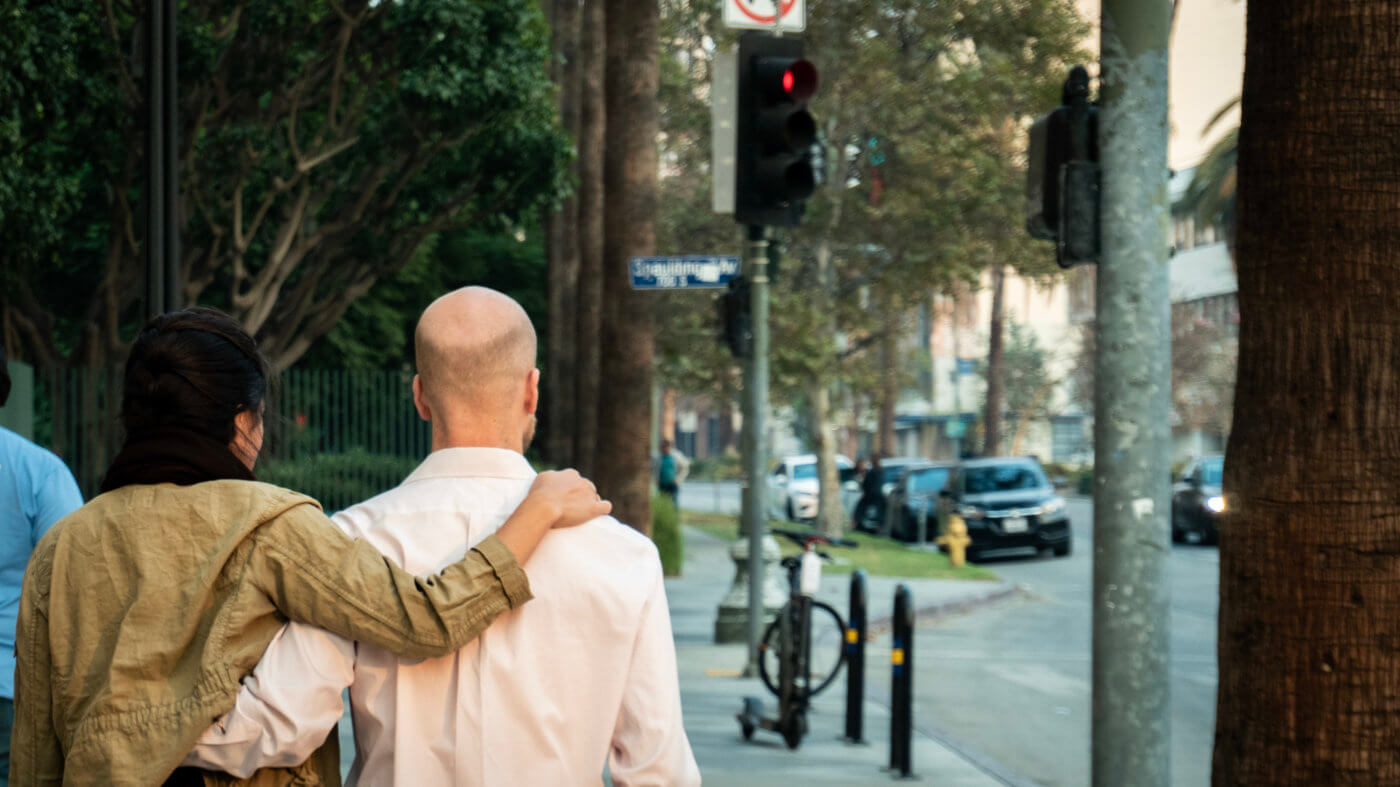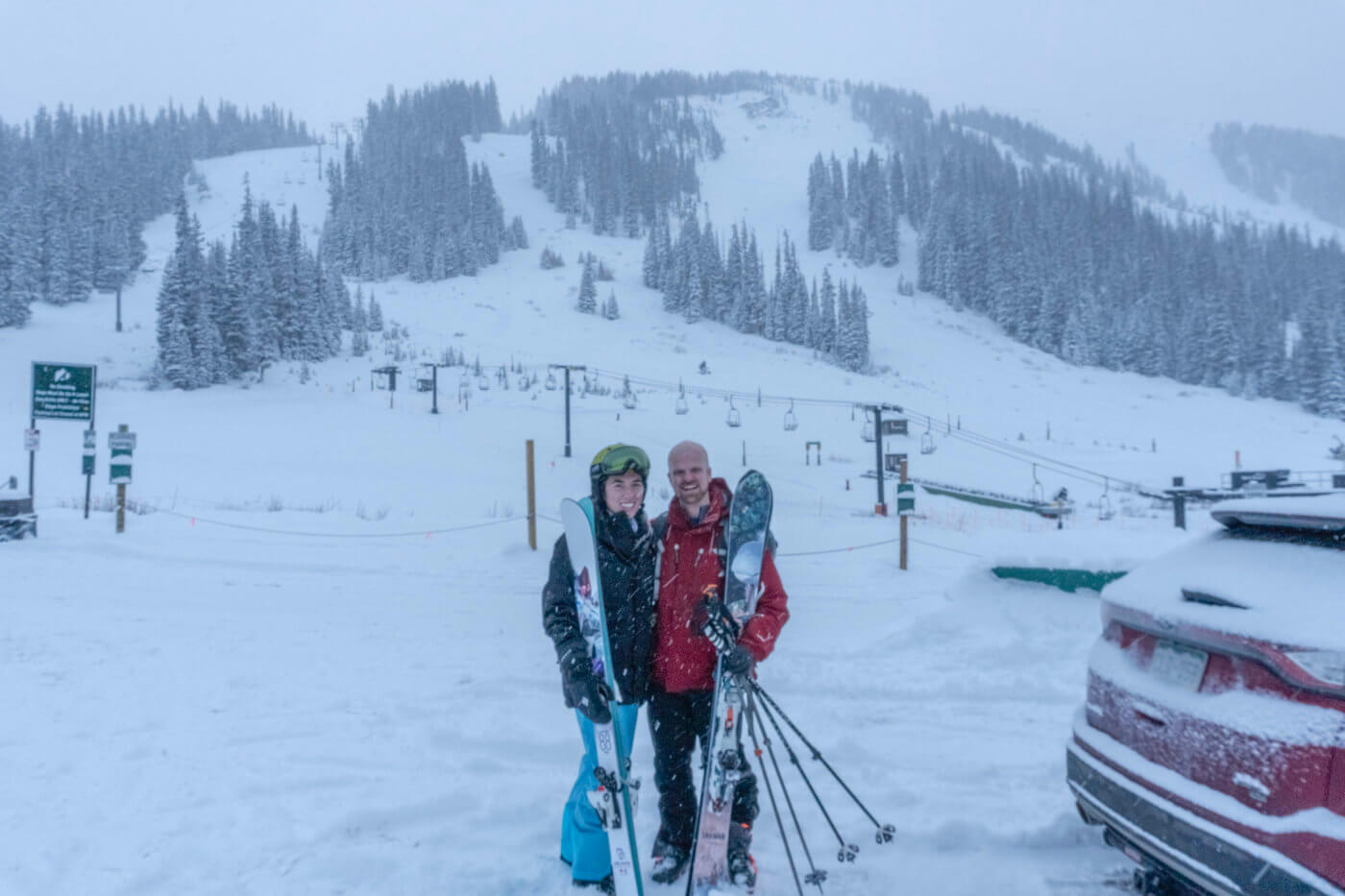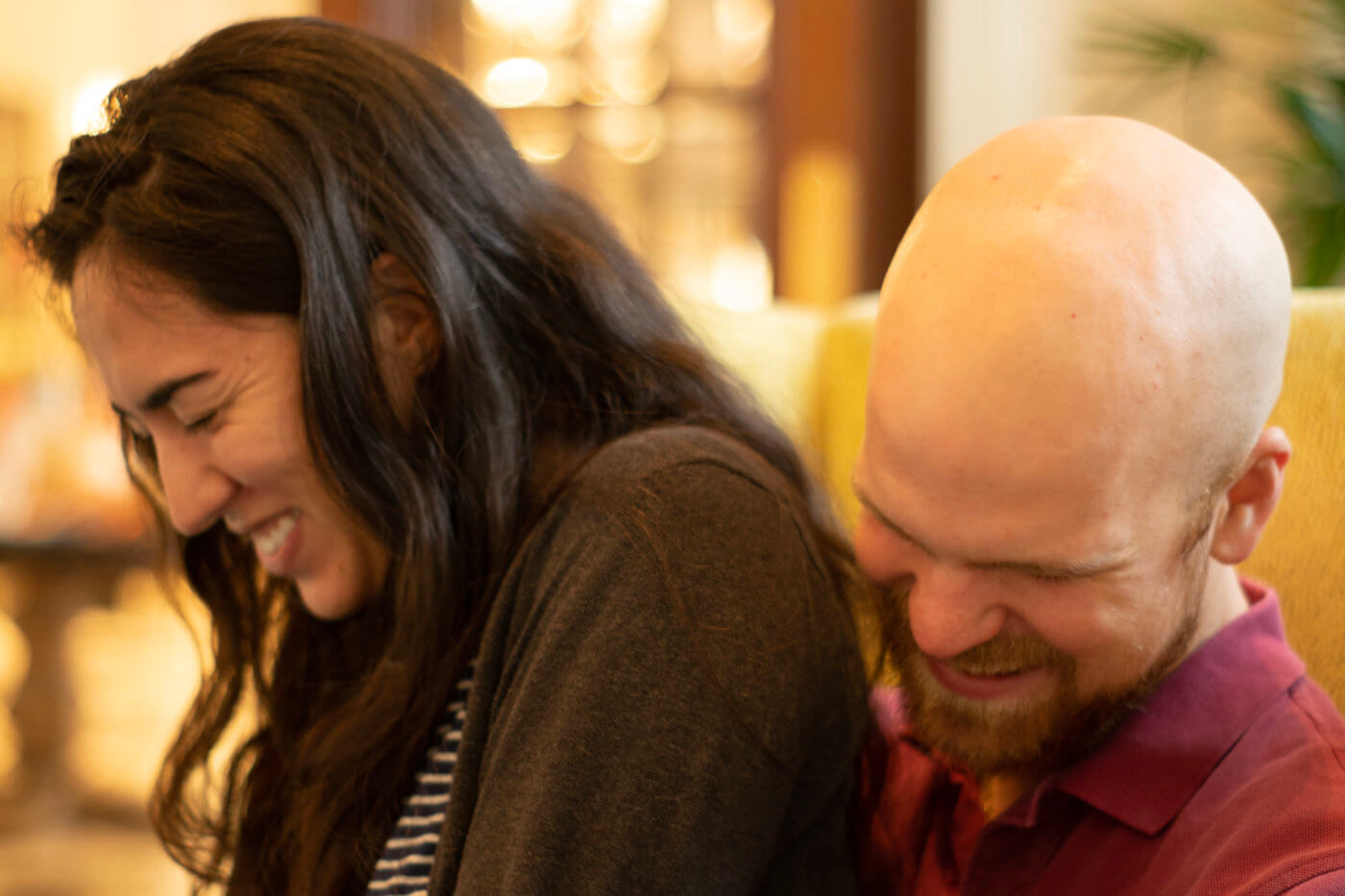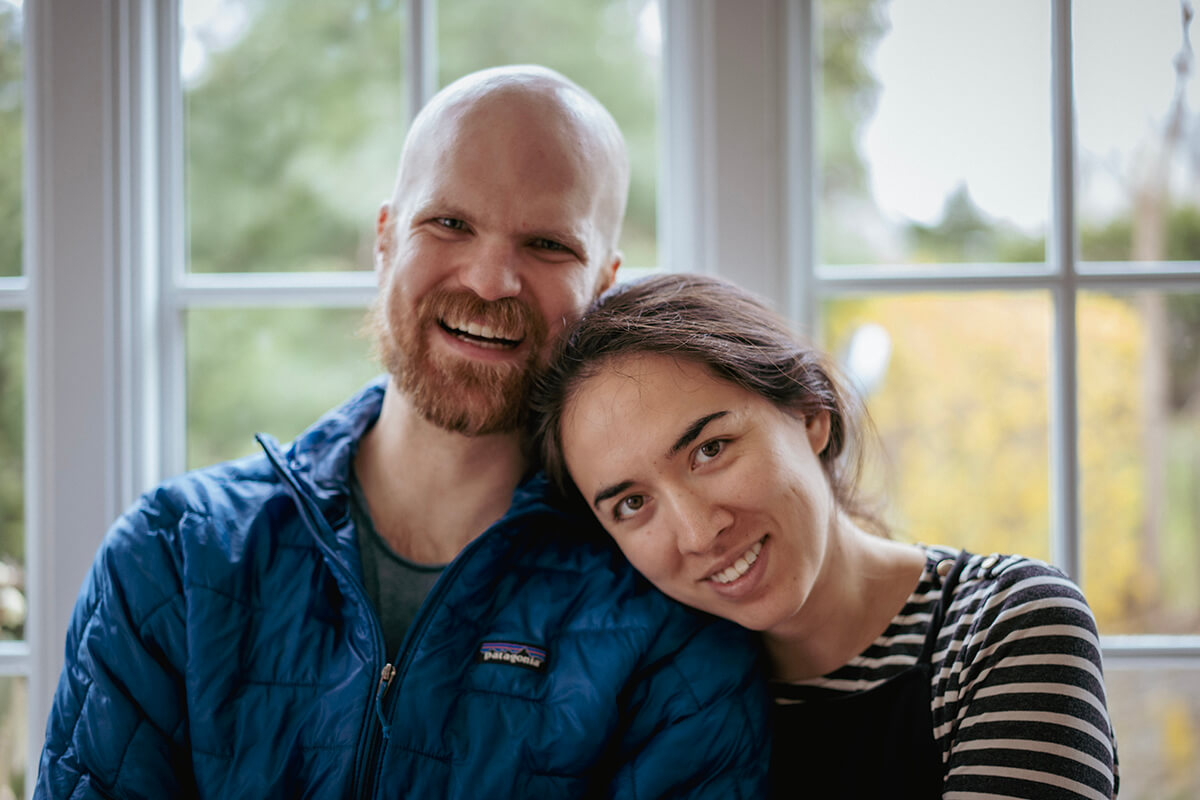When Katie Ozawa ’09 and Hunter Davis ’09 sat on the dais with their class, eager to receive their diplomas at the 2009 Colorado Academy Commencement, they would never have predicted their future—together.
“We were moving into new worlds and going on with our lives,” says Hunter. “I did not think she would end up with me and that I would end up with her!”
Yes, they had been friends at CA, but as they describe it today, they were “the kind of friends who dated each other’s friends.”
Dig a little deeper, and Hunter confesses that maybe, on that Commencement Day, there was already a spark, at least on his part.
“I had a bit of a crush on her,” Hunter says. “But I don’t think she knew it.”
“I did not!” laughs Katie.
It would take years for these two very good friends to find each other as life partners—years they spent pursuing their educations, developing their careers, and enjoying adventures far from Colorado. It would also take courage.
“When people who are best friends start dating, you can ruin the friendship,” Hunter says. “Katie communicated to me that this was a very valuable relationship to her, and it would be a terrible shame to mess that up.”
But eventually, Katie was willing to take the risk.
“We had both done a lot of growing over the years, and our friendship had evolved to something more,” she says. “When I said yes to dating him, I was certain we would spend the rest of our lives together.”

Education and adventure
With CA diplomas in hand, both Katie and Hunter set off on the next step—Katie at Swarthmore College and Hunter at the University of Chicago.
“I chose Swarthmore for the same reasons I liked CA,” Katie says. “I planned to focus on engineering, but I could dabble in other fields.”
She took courses in education and educational psychology, and that led to an internship at the Franklin Institute, a science museum and the center of science education and research in Philadelphia, where she investigated the ways that education and engineering dovetail.
“I started to explore the world of informal education,” Katie says. “How can we reach more children in informal settings, like a museum, to help build their confidence in science and engineering?”
She finished her degree in engineering and started her career as a teacher with an adventure—teaching four grades in one classroom on the island of Saint Lucia in the Caribbean.
At the same time, Hunter was having his own adventure, but not before finishing his undergraduate degree at the University of Chicago.
“I knew when I went there that I wanted to study physics,” Hunter says. “I just had no idea what that really meant.”
He graduated in 2013 with degrees in physics and economics, but it was his avocation as an undergraduate that led to his next step. “My main sport at CA was lacrosse,” he says, “but in college I found cycling is my athletic passion.”
In fact, he was Captain of the University of Chicago cycling team and a standout competitor. In search of an adventure before he started work on his PhD, he joined an elite cycling team in Southern California for one season and then capped that adventure with a month of surfing on Lombok, an Indonesian island east of Bali.
Then, he headed to the California Institute of Technology, where he joined a newly-formed lab led by Professor Mikhail Shapiro.
A first date leads to a name change

By the time Hunter landed at Caltech, Katie was living in Colorado and looking for a position where she could become a museum educator. The two had remained friends throughout the years, seeing each other over holidays and spending time hiking and camping with their group of CA friends.
The exact number remains a bit fuzzy in their memories (was it three times, maybe four times?), but Hunter acknowledges asking Katie on a date more than once before she agreed. She hesitated for a variety of reasons, not the least of which was their geographic incompatibility. Finally, Hunter prevailed. Their first official date was at an elegant Lodo restaurant.
“Hunter had arranged for a custom menu,” Katie recalls. “It was very romantic.”
“Katie wore a beautiful green dress,” Hunter remembers. “I will always remember looking across the table at her, drinking champagne out of a flute, and thinking I had left my own body.”
The long-distance Colorado-California romance began, and, in January 2015, when Katie found a perfect museum job in California, she moved to San Jose. With Hunter five hours away in Pasadena, they continued their relationship by commuting on weekends. They were married in October 2016 on the bridge connecting the old and new wings at the Denver Art Museum. Hunter became Hunter Cole Davis Ozawa.
“I love my wife very much, and I wanted to show her that,” he says. “I wanted to share a last name with our future children, and the easiest way to accomplish that was to change my last name.”
“For him to change his last name to match mine was a beautiful gesture to me and my family,” says Katie.
In San Jose, Katie spent five years at The Tech Interactive, a science and technology center that offers hands-on activities, labs, design challenges, and other STEAM education resources. She served as an experience developer and program manager of engineering design.
“It was a dream job,” she says. “You could watch kids have ‘Aha! moments,’ and you never knew if that was the experience that would lead that student to believe they were good at engineering or math, even if they had not discovered that in the classroom yet.”
Hunter finished his PhD exploring magnetic fields in cells with quantum diamond magnetometry, and the couple finally gave up on long-distance separations by moving to Boston, where Katie is working for MENTOR National, and Hunter is doing post-doctoral research in yet another field—neuroscience.
“One of these days, I will pick a field and stick with it,” Hunter laughs. “But it seems like every two years I find a new set of questions I am interested in, and then I do that work until I complete the study. I am never bored.”
The influence of CA and an enduring mystery

Both Katie and Hunter recall their days at CA as a time when they were encouraged to discover new interests. Their academic and professional careers still reflect that philosophy.
“What I cherish most about the time [at CA] were the many opportunities I had to explore different facets of the world and myself,” Katie says. “I could dip my toes in a lot of different areas.”
She pursued her interest in art, presenting a Portfolio Show as a Senior, but she also describes “taking a detour” to get involved in technical theater with Billy Bair and Steve Scherer.
“That gave me some skills that would stay with me and come in handy as I studied engineering and pursued a museum career,” says Katie.
Hunter was also involved in theater, though in his case, he was on the stage performing. It may sound odd, he says, but the skills he learned in productions directed by Steve Scherer have significantly influenced the kind of scientist he is more than a decade later.
“You give someone the ability to hold a room’s attention, and that is the most important tool I have in my tool kit,” he says. “Doing fundamental science, you are constantly talking to groups—small ones in your lab or large ones at a conference. You can talk in technical jargon, or you can meet people where they are and make it more like teaching a class. It’s like doing a monologue in a play—you speed up, you slow down—and theater was a great training ground for doing that.”
A self-described introvert, Katie credits the tight-knit community at CA as critical to her success. She describes “great support from math and science teachers,” one of whom created an enduring mystery by nominating her for a summer engineering program at Carnegie Mellon University.
“I never knew who it was,” she says. “Somebody just handed me this amazing opportunity, and that speaks to the kind of connections teachers establish with students at CA. Their careful eye sent me on a different trajectory in my life.”
